Shubunkin goldfish are beautiful multicolored goldfish that come in three varieties, one of which is pretty rare.
But what’s the average Shubunkin lifespan? Are Shubunkins good fish for beginners? And can you keep Shubunkins in a tank or only in a pond?
Read this guide to learn all you need to know about Shubunkin care.
Shubunkin Goldfish – At A Glance
Scientific Name
Carassius auratus auratus
Common Name (species)
Shubunkin, Coronation fish, Speckled goldfish, Calico goldfish, Harlequin goldfish
Family
Cyprinidae
Origin
Captive-bred hybrid
Diet
Omnivore
Care Level
Beginner-friendly
Activity
Active, sociable foragers
Lifespan
Average life expectancy of 10 to 15 years
Temperament
Peaceful, sociable fish
Tank Level
Swim in all areas of the tank or pond
Minimum Tank Size
75 gallons
Temperature Range
65° to 72° F
Water Hardness
5 to 19 dGH
pH Range
6.0 to 8.0
Filtration/Flow Rate
Strong filtration and moderate flow rate
Water type
Freshwater
Breeding
Egg-layers, moderately easy to breed
Compatibility
Excellent community fish
OK, for Planted Tanks?
Graze on algae and tender leaves, and a digger that can uproot fragile plants
Shubunkin Origins
All 200 goldfish species are descended from a species of wild Prussian carp that’s found across Asia, specifically in Siberia.
Shubunkin original goldfish were probably developed in Japan around 1900, and the unusual color variant is known in China as Chuwen-chin. Because the color blue is rare in goldfish, Shubunkins command a higher price than the other goldfish color morphs.
Habitat
All types of goldfish share the same basic habitat requirements as wild carp cousins: lakes, small rivers, ditches, and ponds. Here, the adult fish feed on algae, small crustaceans, worms, insect larvae, insects, and some plant matter.
Appearance
Shubunkins are sought-after because of their mottled combination of bright colors, which include red, yellow, orange, purple, white, black, calico marbling, and more.
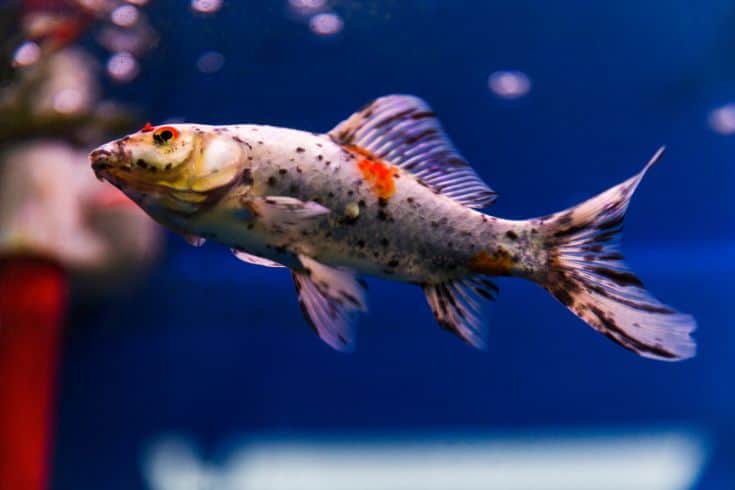
That calico coloration must be set on a blue background. Since blue is a rare color in goldfish, the more blue the Shubunkin, the more valuable it is.
Types of Shubunkin Goldfish
There are three different types of Shubunkin.
American Shubunkin
American Shubunkins are distinguished from other varieties by their tail fins, which are longer and more deeply forked.
This variety of Shubunkin is sometimes called the Japanese Shubunkin since it’s thought to be the original form of the species.
London Shubunkin
London Shubunkins are calico-colored but have rounder fins and more slender bodies than the other variants.
Bristol Shubunkin
Bristol Shubunkins are slender-bodied but have shorter, rounder fins than Comet goldfish.
Male or Female?
Male and female Shubunkins look much the same. That said, you can tell the difference between boys and girls when the spawning season arrives during warmer spring weather.
From above, the female fish are typically rounder and wider than males. Males have a slimmer body shape and develop white breeding stars or tubercles over their heads and their gill covers.
Size
Shubunkins are large goldfish that can potentially reach 12 to 18 inches long when mature. However, fish in outdoor ponds tend to grow larger than those in tanks.
Life Expectancy
Shubunkins have a longer lifespan than tropical fish of ten to 15 years, although this species of fish are known to live for much longer than that when kept in optimum conditions and fed a high-quality, varied diet.
Compatibility and Tankmates
Shubunkins are social fish that don’t do well if kept alone. If kept with the right mix of tank mates, Shubunkins can make a good addition to a community tank with Common goldfish and Comets.
Tank Mates
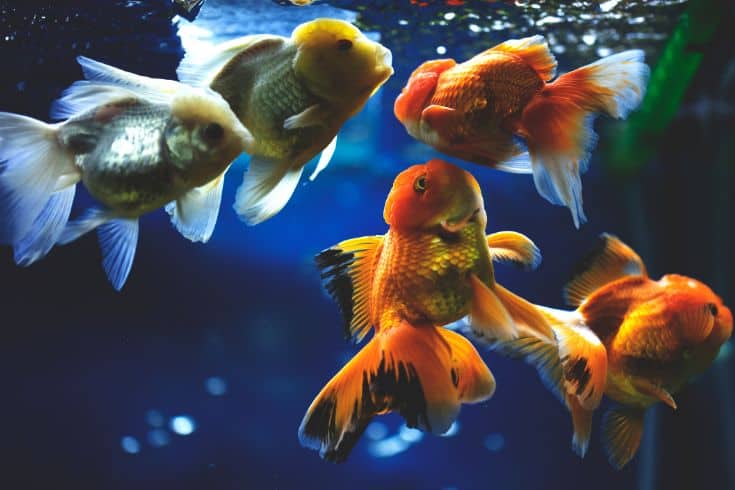
Ideally, you should keep Shubunkins in large groups of conspecifics or with other species of slim-bodied goldfish, Koi, Orfe, and the like, making the fish an excellent choice for goldfish ponds.
Fish to Avoid
Shubunkins are large, fast swimmers, so I don’t recommend keeping them with round-bodied Fancy goldfish. Fancies are slower fish that will be buffeted and bumped by the speedier Shubunkins and will be outcompeted at feeding times.
Larger snails are generally fairly safe with Shubunkins, although I would avoid keeping shrimp with these hungry fish, as the inverts will almost certainly end up as lunch!
What to Feed Your Shubunkin Goldfish
Goldfish are omnivorous, needing a mixture of plant matter, algae, and meaty protein in their regular daily diet.
To have your Shubunkins show their best colors and to bring them into breeding condition, you’ll need to feed your fish a high-quality protein diet of fish flakes and frozen foods.
What About Live Foods?
Shubunkins love live foods, and if you keep your fish in a pond, they will certainly find plenty to eat among the fauna and flora that lives there.
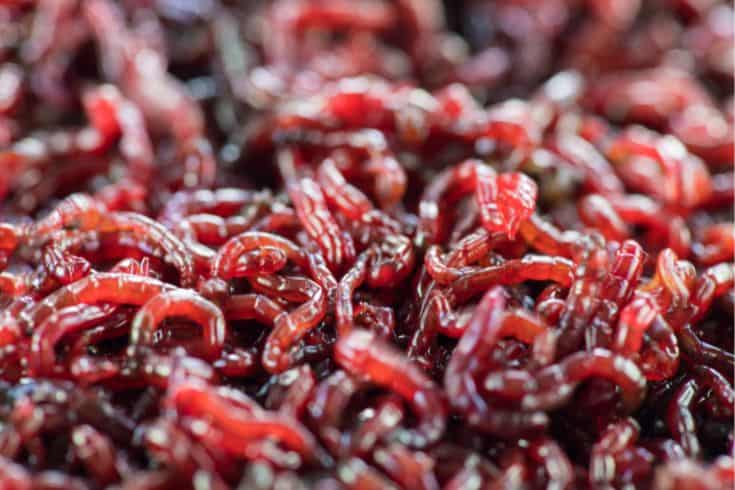
However, I don’t recommend buying live food for your fish, as that often comes with parasites and bacteria that could contaminate your main tank.
How Much and How Often to Feed Shubunkins
Tank-kept Shubunkins
Shubunkins in a fish tank should be fed twice daily, offering only what they will eat in two or three minutes. You can give your fish frozen foods and fish flakes as a basic diet.
Pond Fish
In a garden pond, your Shubunkins will find plenty to eat, happily gobbling up insects, algae, plant matter, small worms, and larvae that occur naturally.
That’s fine when the fish are small, but you’ll need to supplement that diet with goldfish pellets as the Shubunkins get larger. Feed the fish once a day during the spring and summer when the weather is warm and the fish are more active.
In the fall, continue feeding your fish to build them up for winter, and then stop daily feeds when the pond water temperature falls below 50°F. In winter, feeding your fish once a week or so is plenty.
Tank Requirements
Tank size
Shubunkin goldfish grow quickly and can reach over a foot long when mature. So, you’ll need an indoor aquarium of at least 75 gallons for a pair of fish. If you want to keep more, an additional ten gallons per fish is required, so you’ll need a larger tank.

I recommend a long tank with plenty of swimming space for these fast, active fish.
Shubunkins will jump at feeding times, and when startled, so you’ll need a tank with a lid.
Tank Setup
Like most fish species, you can get the best out of your Shubunkins by providing them with the proper tank size, optimum tank conditions, and a wide variety of high-quality foods.
Substrate
Shubunkins are diggers, so a medium-gauge substrate rather than sand is recommended.
Decoration
I think a natural look suits these fish best, so add driftwood, twisted roots, rocks, and pebbles to the tank. Remember to leave plenty of swimming space for these lively fish!
Plants
Shubunkins will eat your plants, so choose strong species with tough leaves that the fish won’t eat. To stop the fish from uprooting the plants, try using clay pots and plant weights or column feeder plants that you can fix to pieces of wood and rocks.
Habitat Requirements
Filtration
Shubunkins produce lots of waste, so you’ll need a powerful external canister filter with additional powerheads to cope and keep the water clean and safe for your fish.
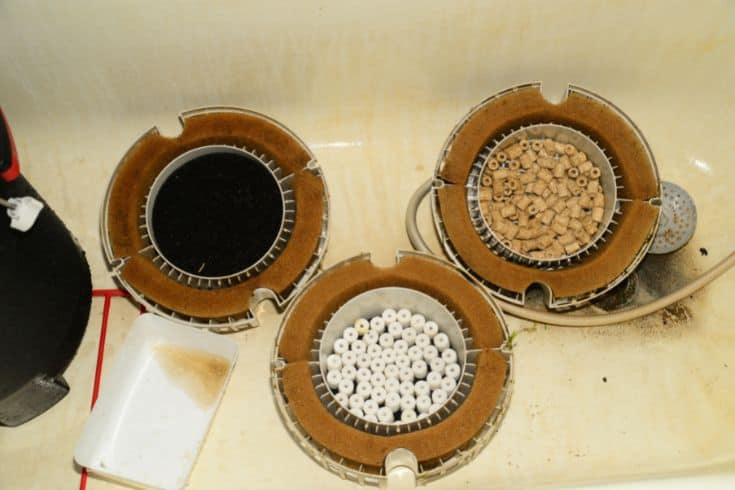
Goldfish prefer a slow water flow, so you might need to buffer or deflect the water movement with plants or strategically positioned decorations.
An air stone or a bubbler can help to oxygenate the water.
Water Temperature
Shubunkins are coldwater fish that need a water temperature of between 65o and 72o F.
During the winter month in a pond situation, the fish’s metabolism slows down, and they become much less active, hiding in the substrate at the bottom of the pond. In fact, Shubunkins can survive water temperatures of zero degrees, provided the pond doesn’t freeze solid and there’s sufficient dissolved oxygen in the water.
The water pH should be between 6.0 to 8.0, and the water hardness 5 to 19 dGH.
Lighting
Shubunkin goldfish need a day/night lighting cycle to thrive. However, your plants require eight and ten hours of daily light for photosynthesis.
Tank Maintenance
Shubunkin goldfish are large, dirty fish so tank maintenance can be something of a chore.
You need to deep-clean the substrate with an aquarium vacuum cleaner while performing a weekly 30% water change. Pay close attention to the tank corners and underneath decorations, where debris accumulates, and use an algae magnet to remove green slime from the viewing panes.
Rinse the biological filter media in tank water to get rid of muck that could clog the filter, and replace the media periodically in line with the manufacturer’s directions.
Keeping Shubunkins In A Garden Pond
As mentioned earlier in our guide, Shubunkins are large fish that generally do better in a pond than in a tank.
A pond environment is naturally well-oxygenated, contains natural food sources for the fish, and offers plenty of freedom and space for the fish. Generally, Shubunkins grow much larger when kept in a pond, and they tend to live for longer.
As a general rule, the larger the pond, the easier it will be to maintain and care for, as long as it’s sited properly. That’s because larger volumes of water are typically much more stable than smaller ones.
Pond Shape
You can either sink your pond into the ground using pre-formed fiberglass or plastic structure or build one as a raised feature. There are plenty of different pond shapes available, so the choice is yours.

When it comes to the depth of your pond, that’s up to you. A pond a couple of feet deep is fine for goldfish, although if you live in a cold climate, the pond should be deeper to prevent it from freezing solid in winter.
Filtration
You must have an efficient filtration system for your goldfish pond. The mechanical filter element of the system keeps the water free from debris, while the biological filter encourages beneficial bacteria to colonize the filter media, where they break down ammonia and nitrite into nitrates.
Unlike an aquarium filter, a pond filter only needs cleaning a few times per year, depending on the pond’s bioload. Generally, when you notice a drop in flow from the filter outlet pipe, that indicates the mechanical filter is clogged with debris and needs cleaning.
Pond Position
You should position your Shubunkin pond in a spot where it gets a good balance of shade and sunlight during the day, ideally away from prevailing winds and overhanging deciduous trees.
Plants
Fill the pond with a variety of marginal, submerged, and floating aquatic plants that will provide shade for the fish, help to oxygenate the pond, and remove nitrates from the water. Ideally, you want between 33% and 50% of the water’s surface covered with vegetation.
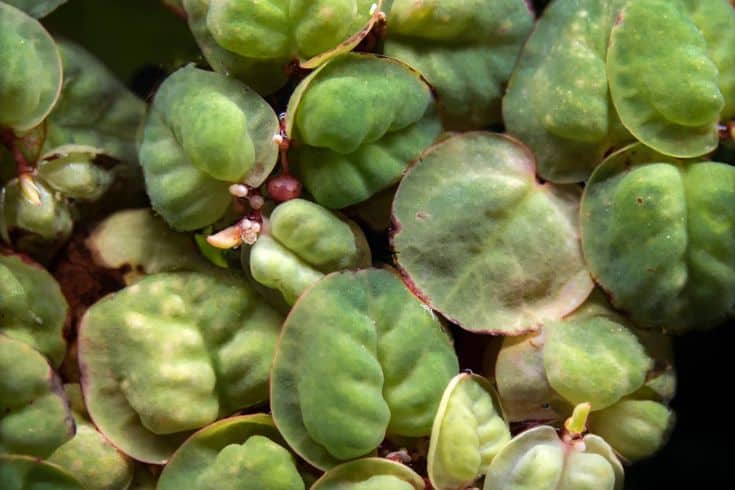
You can help to oxygenate the water by fitting a waterfall, a fountain, or using airstones to agitate the surface. Good oxygenation is important on hot summer days and overnight when pond plants are producing CO2.
Stocking Levels
The general rule for stocking your pond is to allow 10 inches of fish per 100 gallons of water, taking into account the size of the fish at maturity.
Health and Disease
Shubunkins are hardy goldfish, although they can be susceptible to some common goldfish diseases.
Signs of Good Health
These are lively, sociable fish that love swimming with their companions and foraging in the substrate.
Common Health Issues and Treatment
Health Issue
Ich (White Spot Disease)
Symptoms or Causes
Ich is a very common disease that’s caused by an aquatic protozoan parasite.
Fish infected with Ich develop a sprinkling of tiny white spots on their fins, gill covers, and bodies. They also flash against the gravel and other solid objects in the aquarium.
Suggested Action
Raise the water temperature to 82o F for three days. Use an OTC White Spot Disease medication to treat the tank.
Health Issue
Flukes
Symptoms or Causes
Flukes is the term used to describe various types of external fish parasites. These macroparasites can often be seen with the naked eye attached to the fish’s skin or gills.
Suggested Action
Treat the fish tank with an OTC antiparasitic medication.
Health Issue
Fungal infections
Symptoms or Causes
White fluffy growths on the fish’s body, mouth, and head.
Suggested Action
Quarantine infected fish, and treat with an antifungal medication.
Health Issue
Bacterial infections
Symptoms or Causes
Sores and ulcers on the body and head, ragged, bloody fins.
Suggested Action
Treat the tank with OTC antibacterial treatment.
Breeding
Like all goldfish, Shubunkins are egg-layers, which will breed them in your home tank. In a pond, the breeding season begins when the weather warms up, and the days become longer in the spring.
Usually, the fish simply do what comes naturally, and you’ll discover a whole bunch of baby fish in your pond one warm spring day!
Breeding Tank
If you want to breed Shubunkins in your aquarium, you’ll need to set up a separate breeding tank for the best chance of success.
You’ll need a large spawning tank containing smooth stones, lots of lush planting, and some spawning mops where the female can deposit her sticky eggs.
To encourage spawning, reduce the water temperature to 60° F. Gradually raise the temperature by a few degrees over several days until the fish begin breeding, which usually happens once the water temperature is between 68° and 74° F.

Offer the Shubunkins a high-protein diet of live bloodworms, daphnia, brine shrimp, etc.
Spawning
As a prelude to mating, the male fish pursues the female around the aquarium, and their colors become brighter and more vibrant. You should see tiny white breeding stars or tubercles appearing on the male’s gill covers and head, indicating that he’s ready to breed.
After a few hours of courtship, during which the male pushes the female against plants to trigger her to lay her eggs, up to 10,000 eggs are produced.
The Eggs and Fry
Once the female has laid her eggs, you’ll need to remove the parents from the tank so that they don’t eat the eggs and fry.
The fry usually hatches between four and seven days after the eggs are laid. When the fry is free-swimming, you can offer them commercial fry food and infusoria. Once the juvenile Shubunkins are big enough to cope, give them baby brine shrimp and finely crushed goldfish flakes.
Availability
Shubunkin goldfish are available from most fish and pond stores for around $10 per fish.
That said, you can expect to pay more for fish with lots of blue coloration, and London Shubunkins are rarer and typically more expensive than other varieties. Particularly desirable examples of these gorgeous fish can sell for hundreds of dollars.
FAQs
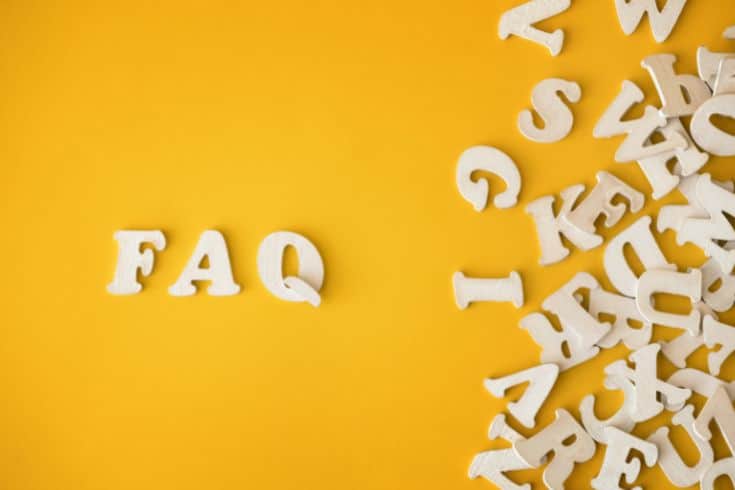
Here are the answers to a few of your questions about Shubunkin goldfish and their care.
Q: Do Shubunkin goldfish eat algae?
A: Yes, Shubunkins eat algae as part of their regular diet.
Q: Is Shubunkin a Koi?
A: No. Shubunkins are a variety of slim-bodied goldfish, whereas Koi carp are a different species.
Q: Can you mix Koi and Shubunkin?
A: Yes, Koi and Shubunkins make excellent pond fish and generally get along well when kept in groups in a spacious pond.
Q: Are Shubunkins aggressive fish?
A: All goldfish are typically peaceful fish that do best when kept in large groups of their own kind. You might occasionally notice your fish chasing each other, but that’s usually a spawning behavior rather than aggression.
Feeding times can be somewhat frenetic, and bumping and barging do occur, but the fish are not fighting; they’re merely competing for food.
Final Thoughts
Did you enjoy our guide to caring for Shubunkin goldfish? If you did, please share the article with other goldfish fans!
Shubunkins are a variety of large, slim-bodied goldfish that should be kept in spacious ponds unless you have a huge aquarium in which to house them. These are peaceful fishes that create a vibrant, colorful display when kept in large groups. The Shubunkins are straightforward to keep, although they generate a lot of waste, making tank maintenance rather time-consuming.
Did your Shubunkins breed in your pond? Tell us about your fish in the comments section below.
